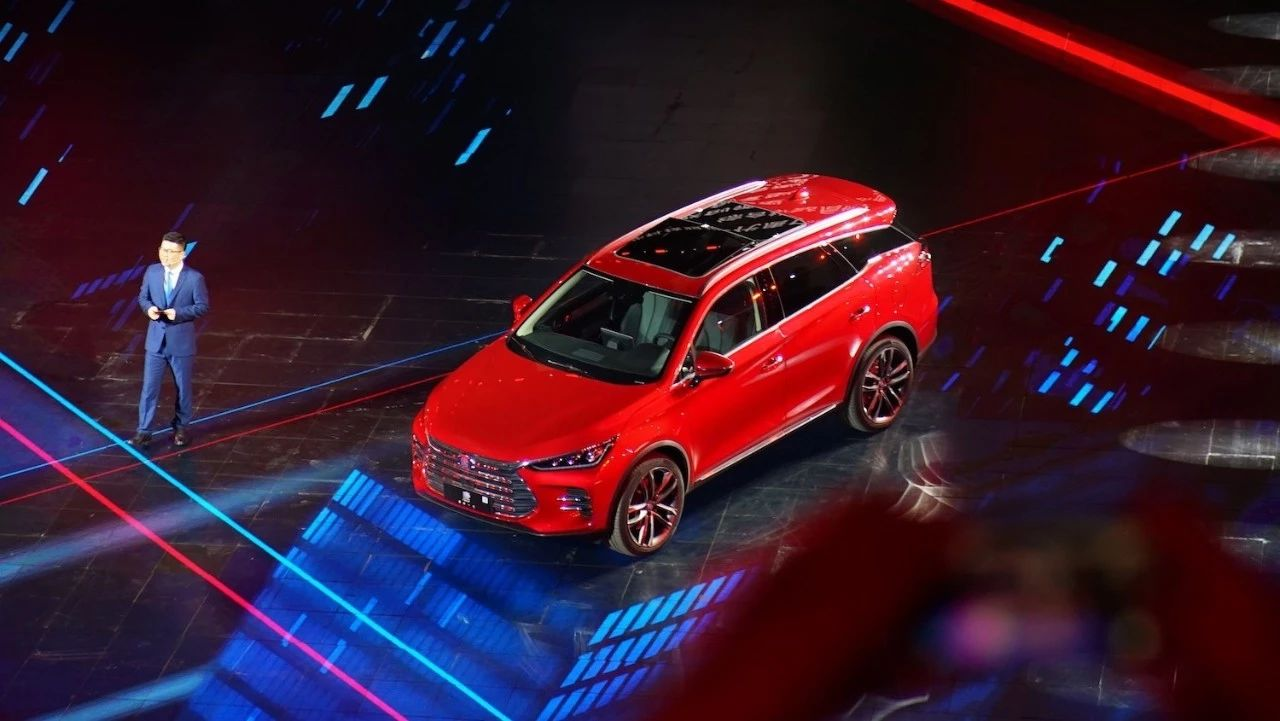This article is authorized by GeekCar (WeChat ID: GeekCar)
When it comes to BYD Tang, what comes to your mind? 0 to 100 km/h acceleration in 4.9 seconds? It is everywhere in Shanghai? Pure electric range of 80 km? The exterior style heavily “borrowed” from a certain Japanese luxury SUV brand?
This car has received both praise and criticism, but the fact is that these two plug-in hybrid new energy vehicles (NEVs), Qin and Tang, have become the most iconic products of BYD to a certain extent.
Today, the long-anticipated new generation of BYD Tang was officially launched in Beijing. You may be attracted by its beauty or know nothing about it, but don’t worry, this article will help you understand this car.
Price
For the launch event of a new car, this is undoubtedly the most important information. The new generation BYD Tang has three versions: fuel, plug-in hybrid, and pure electric, with the first two versions launched this time. According to BYD’s official statement, “Tang” refers specifically to the fuel version, “Tang DM” refers to the hybrid version, and “Tang EV” refers to the pure electric version to be launched in the future.
There are five configurations for Tang and Tang DM respectively, and the prices are:
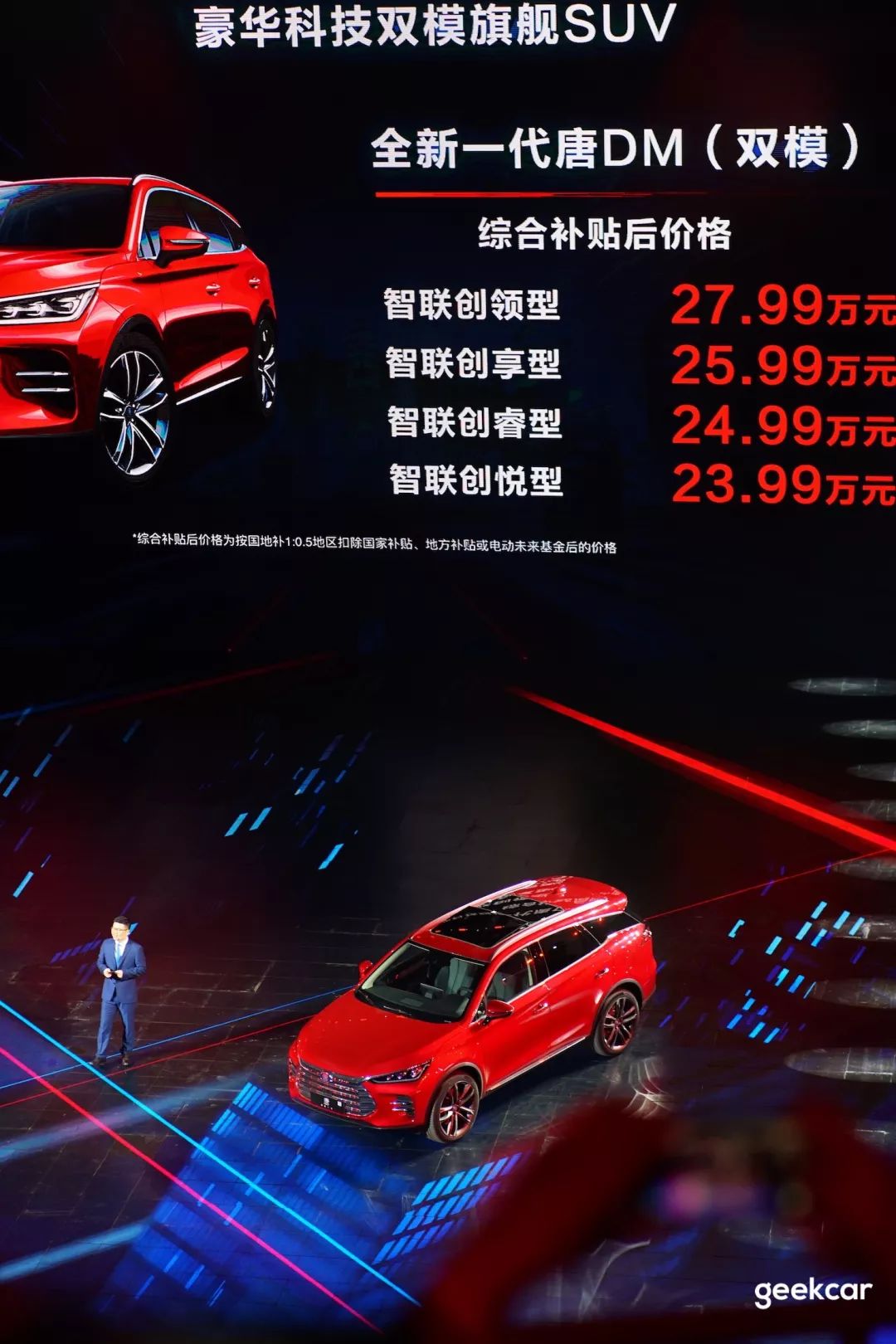
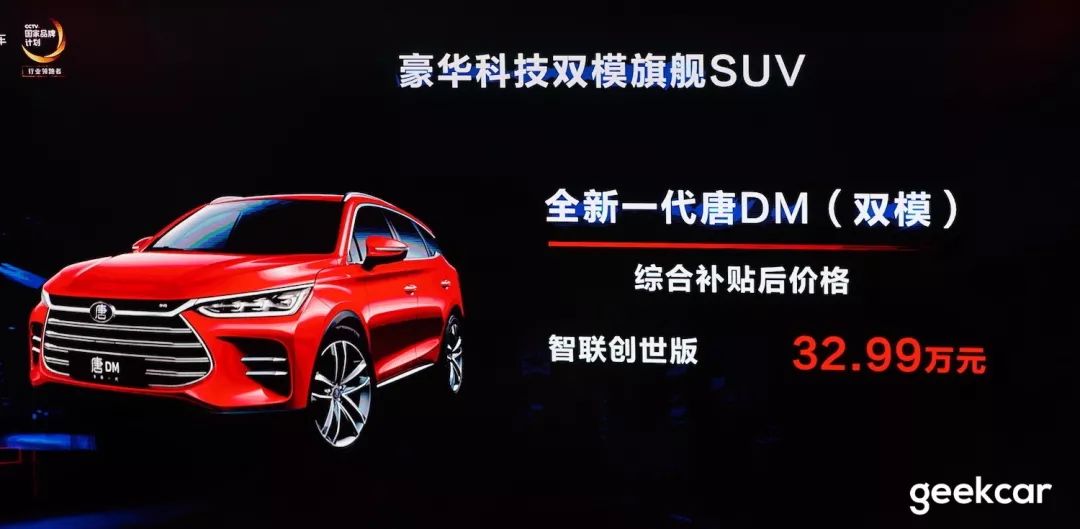
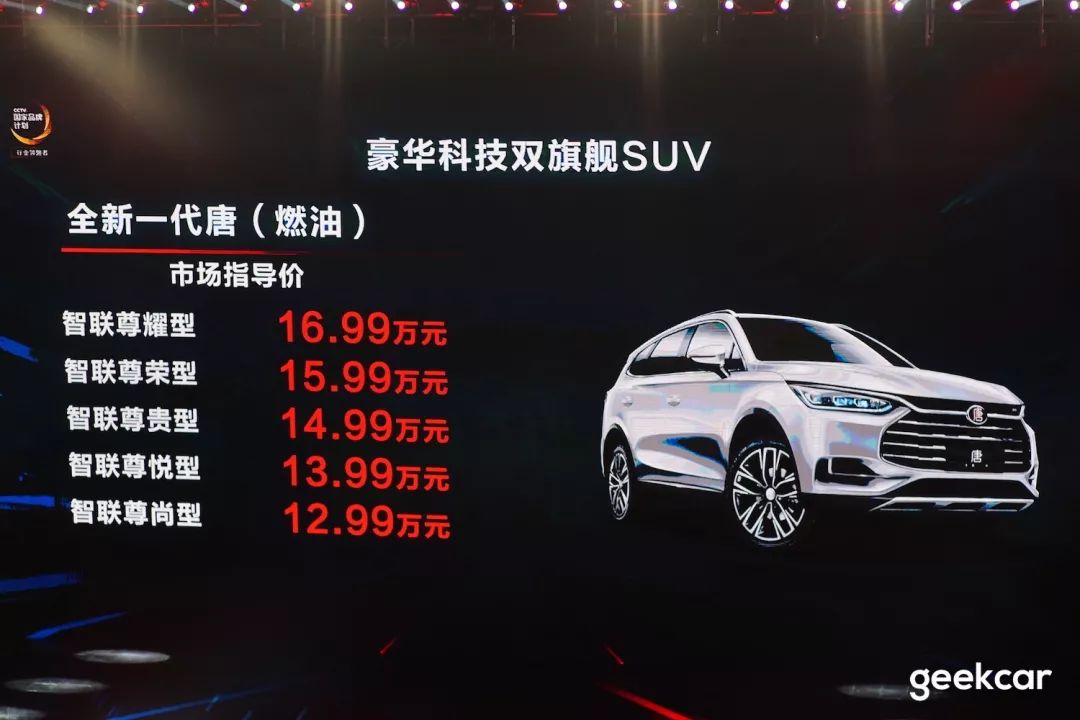
The official guide price for Tang DM is the price after subsidies. This article focuses mainly on Tang DM.
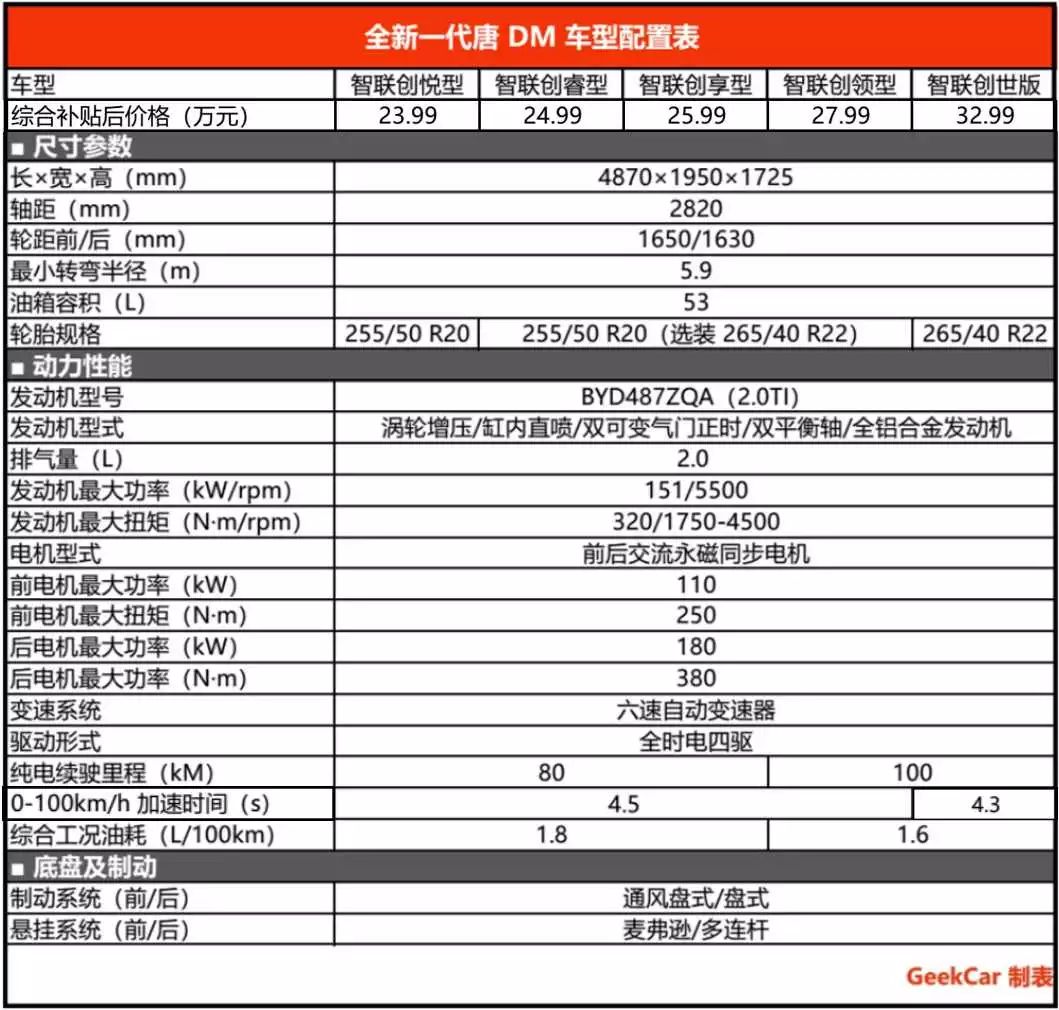
Are Tang/Tang DM/Tang EV the same in appearance?
The answer is no. Although they all use the new generation DragonFace design language, the three cars have different front details. See the picture below:
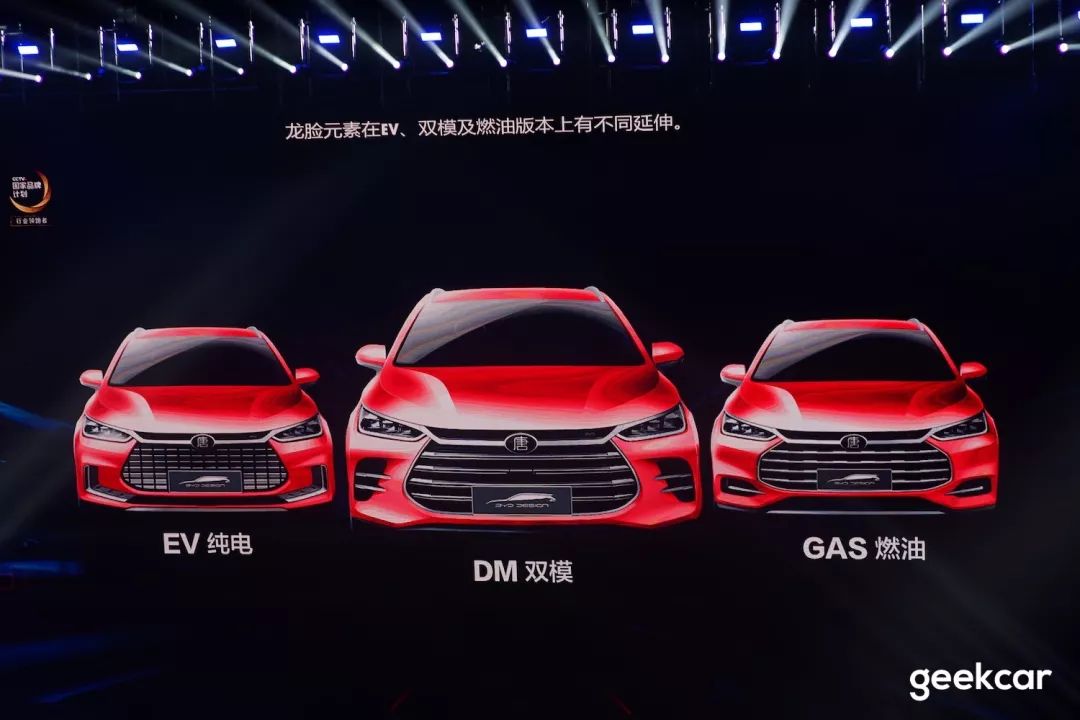
Tang DM is the most radical in this regard.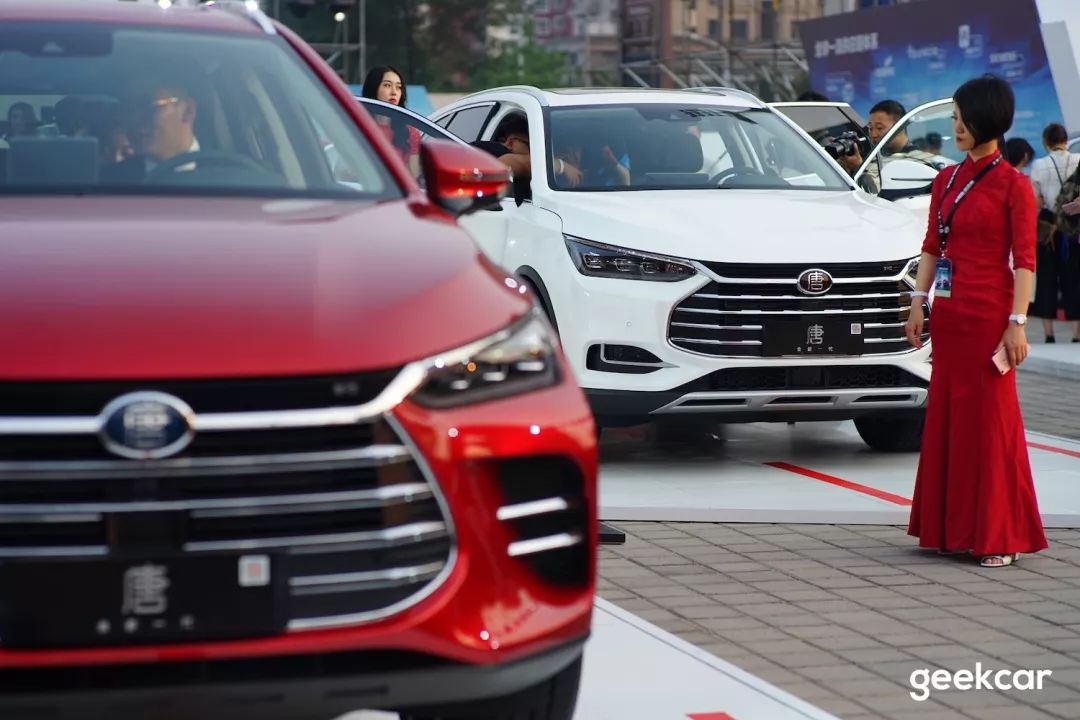
In addition, the C/D column of Tang DM adopts a suspended design, while the design of the fuel version Tang is relatively conventional.
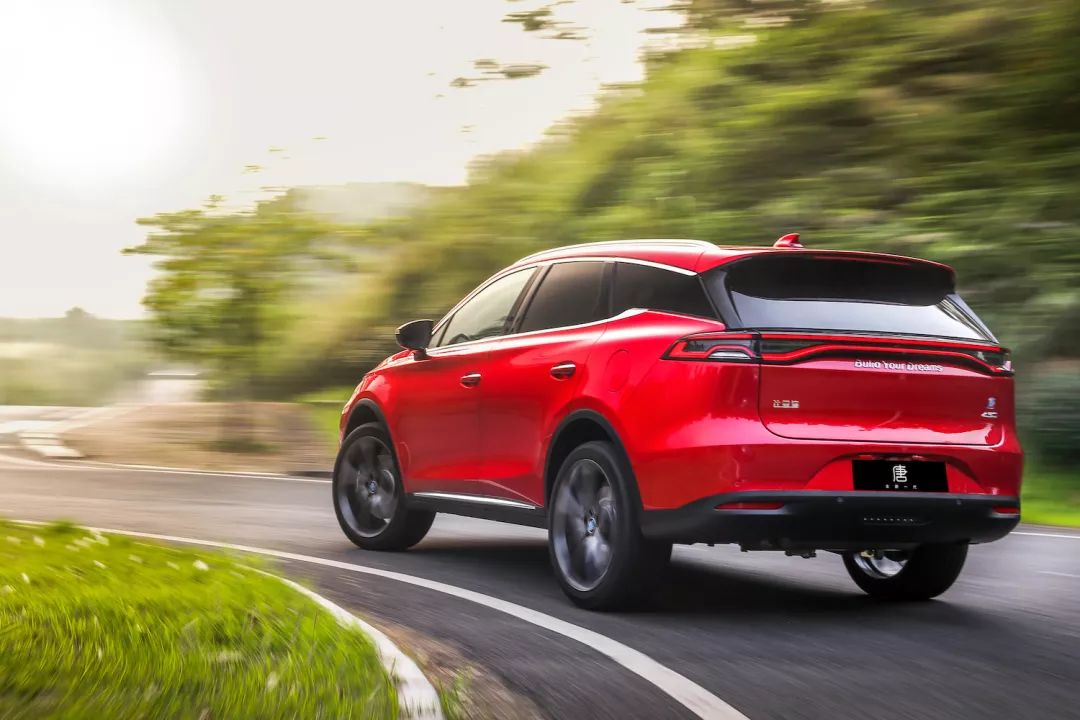
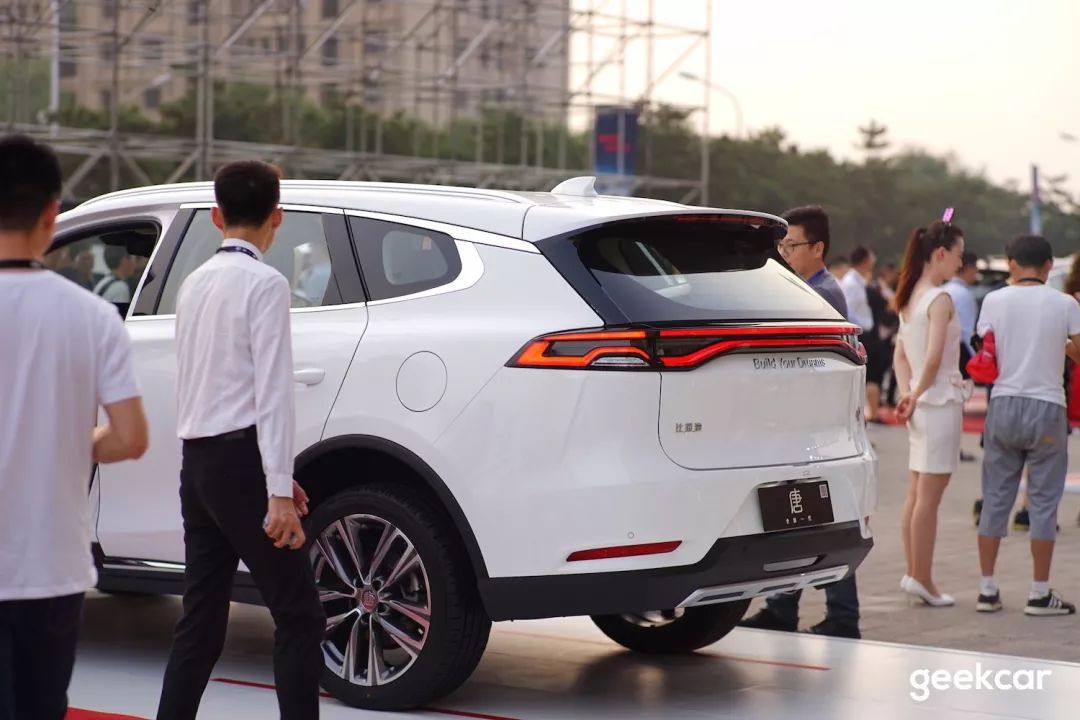
Several details can quickly distinguish between Tang DM and Tang. Firstly, its logo is blue, while Tang’s is black. Secondly, the size of the frontal air intake grille is larger. Thirdly, if you see a red new-generation BYD Tang on the road, it must be the plug-in hybrid version.
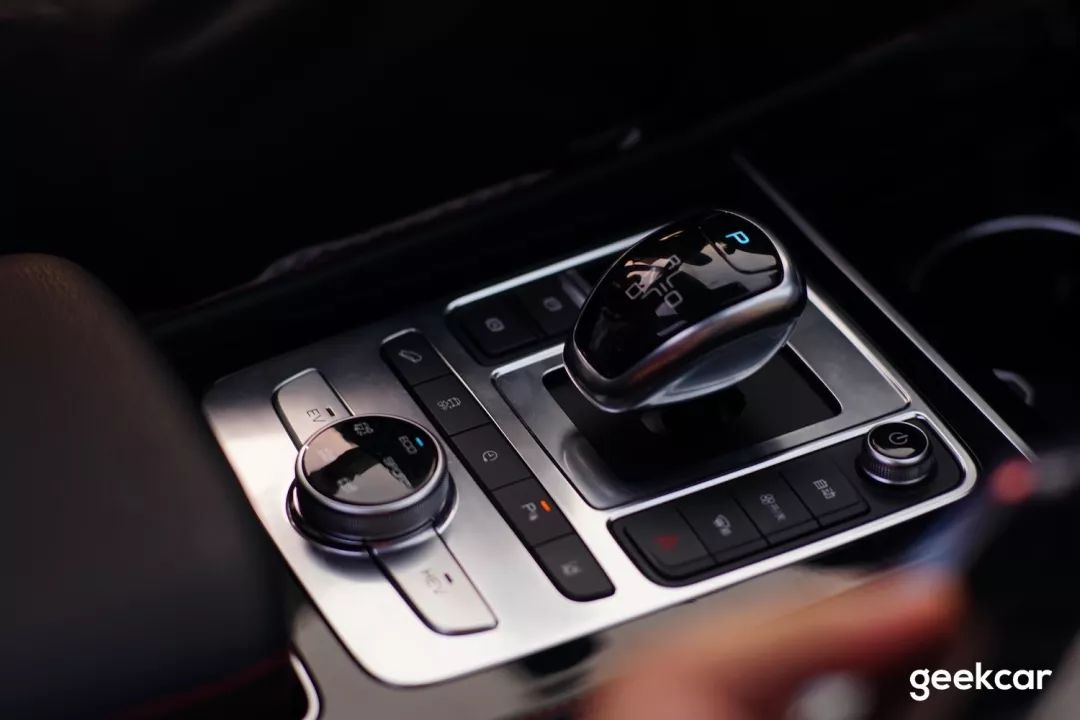
Tang EV to be launched at the end of the year
Recently, stealth spy photos of Tang EV were exposed online. During this event, BYD exhibited Tang EV in a straightforward manner.
From the photos, some changes can be seen in the front face, and the grille design elements are very similar to those of the Wangchao concept car last year.
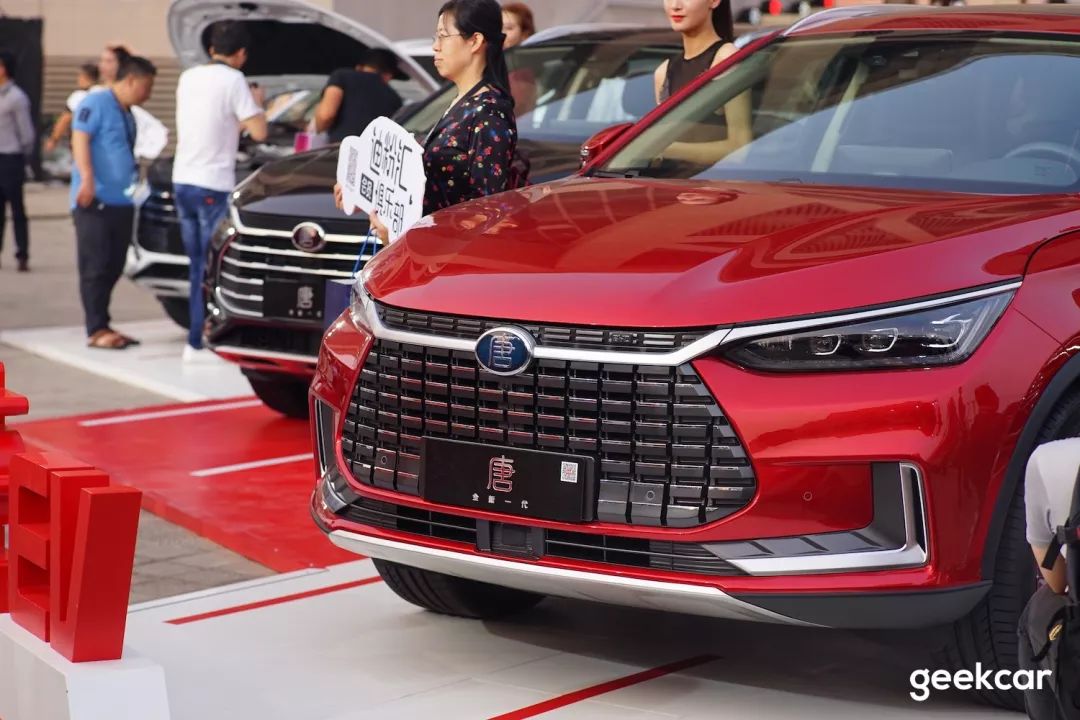
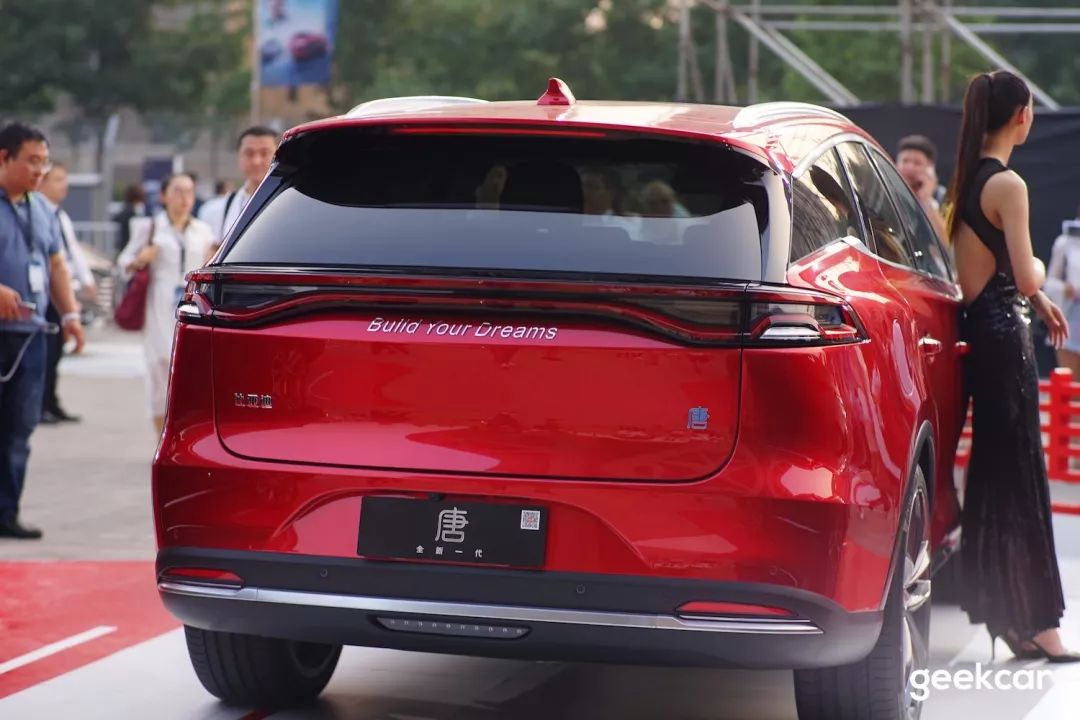
At the press conference, its basic performance was also announced: acceleration of about 4.5 seconds per 100 kilometers and a comprehensive range of over 500 kilometers under normal conditions. However, it is somewhat speechless that BYD actually used terms such as “super-strong pure electric SUV on the surface” in the PPT…

Why is Tang so good-looking?It’s undeniable that the new BYD Tang is very beautiful. I posted the photos I took of the car on my social media, and someone commented, “It looks like an Audi.” I don’t know how Wolfgang Egger, the former Audi chief designer that BYD spent a lot of money to hire, would feel about this, but if you cover up the logo, most people probably wouldn’t recognize it as a BYD.
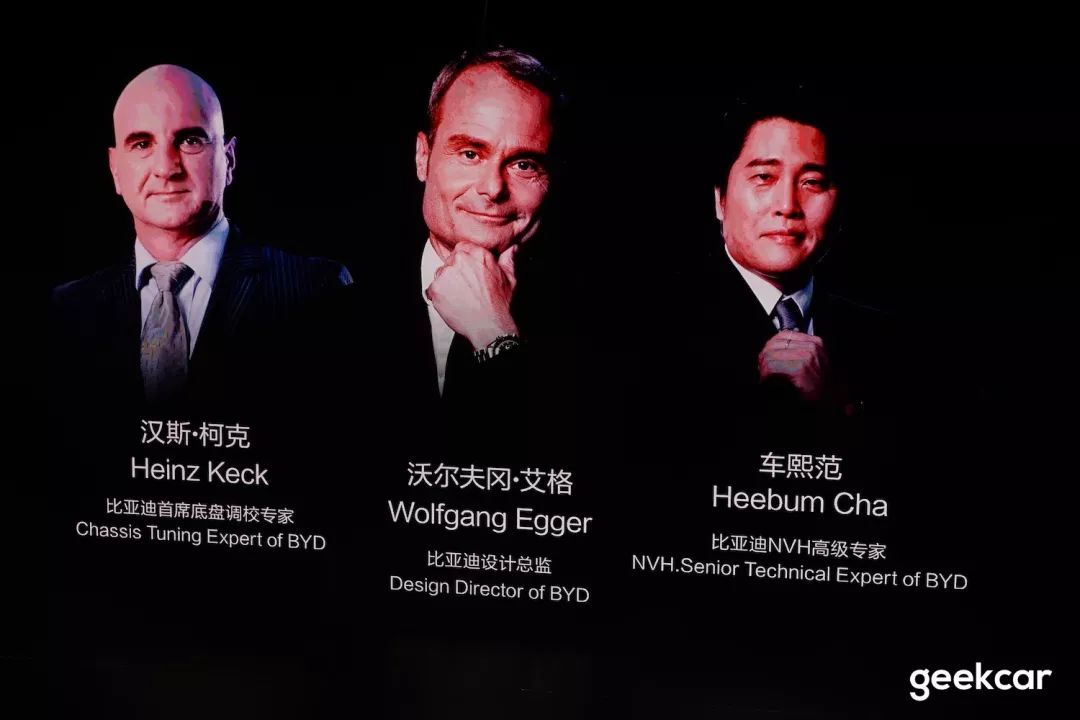
However, it is indeed a new generation design of BYD, completely different from the previous Tang which “borrowed” the design style of a certain Japanese luxury SUV.
Egger proposed the Dragon Face design language. Although this front-end design has already been used on some new BYD cars before, those were more like “cosmetic changes”. Today’s new Tang is the first car that Egger has completely designed, and from the end result, the “former Audi chief designer” is not just a name.
As for why use a dragon as a design language, Egger explained that in Chinese traditional culture, the dragon symbolizes authority, power and other elements.
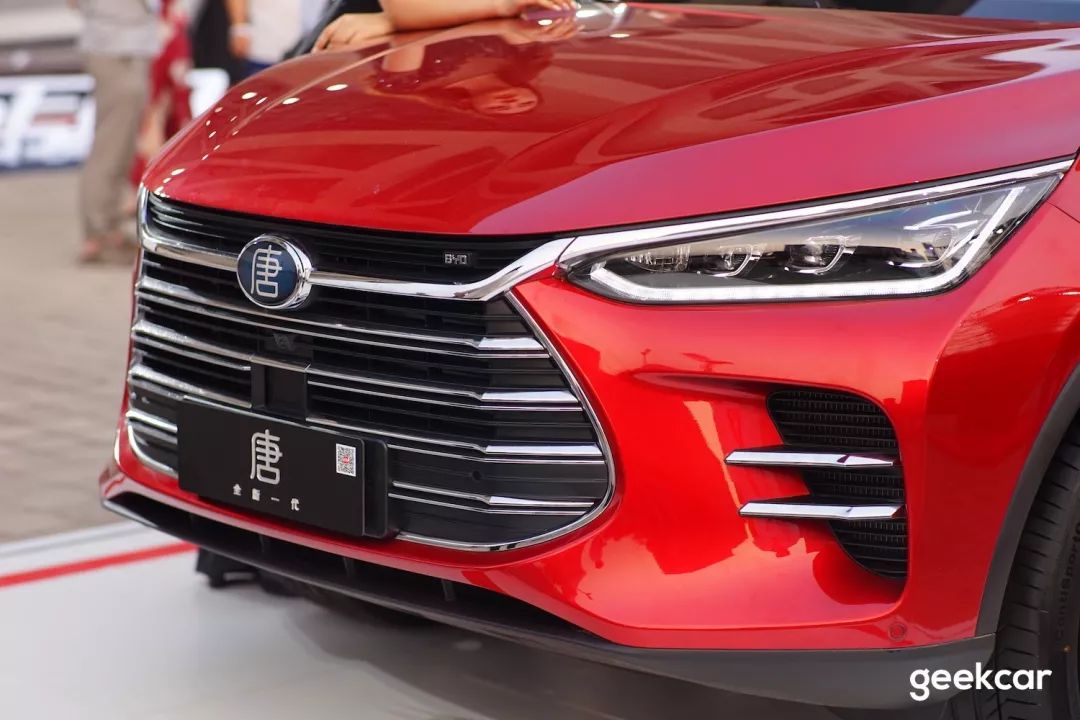
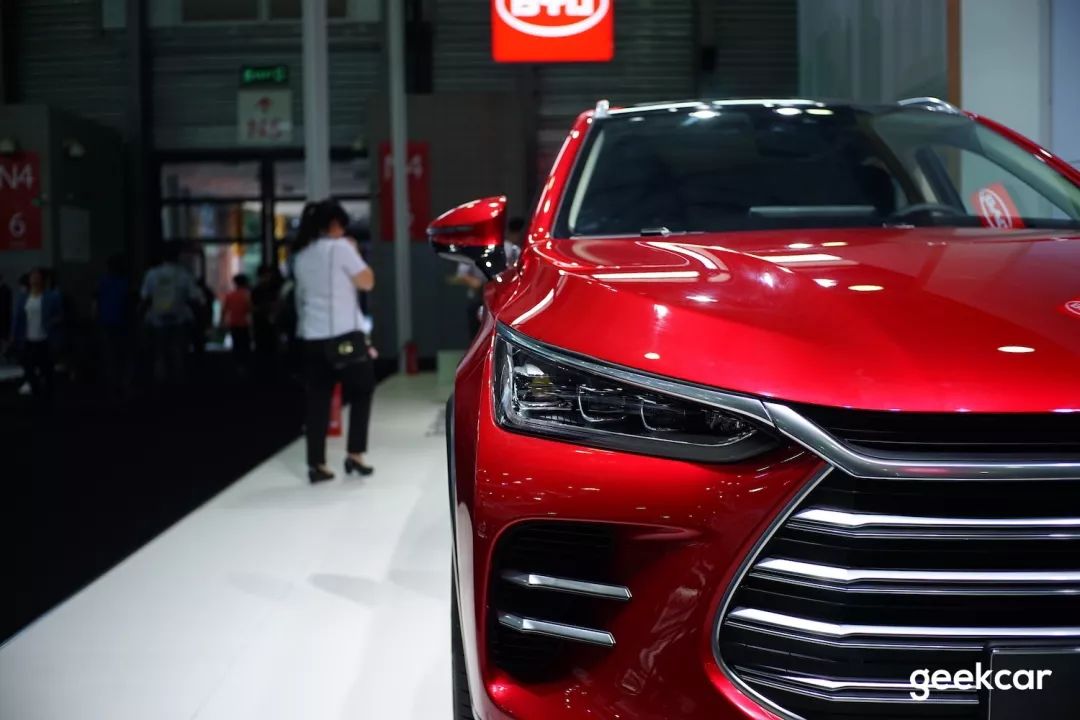

However, having a good chief designer does not necessarily mean that the final mass-produced car will be beautiful, just like many graphic designers have good skills, but their works are not necessarily good-looking. The reason is the aesthetic level of the person making the final decision. There are too many precedents in the domestic auto industry where the leader makes the decision on the design scheme, but obviously Egger has a strong say and decision-making power at BYD, which is of course related to the will of Wang Chuanfu, the boss. Once the boss understands, things can be easily dealt with.
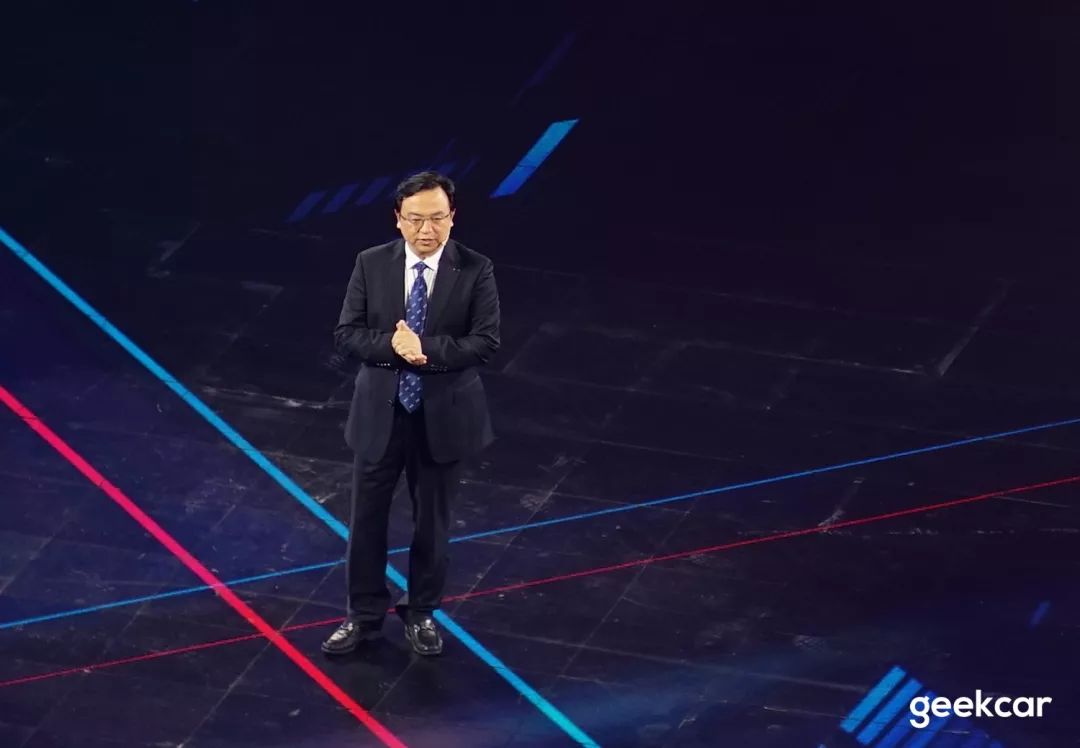
Of course, it would be even better if the English words “Build Your Dream” on the rear of the car were removed.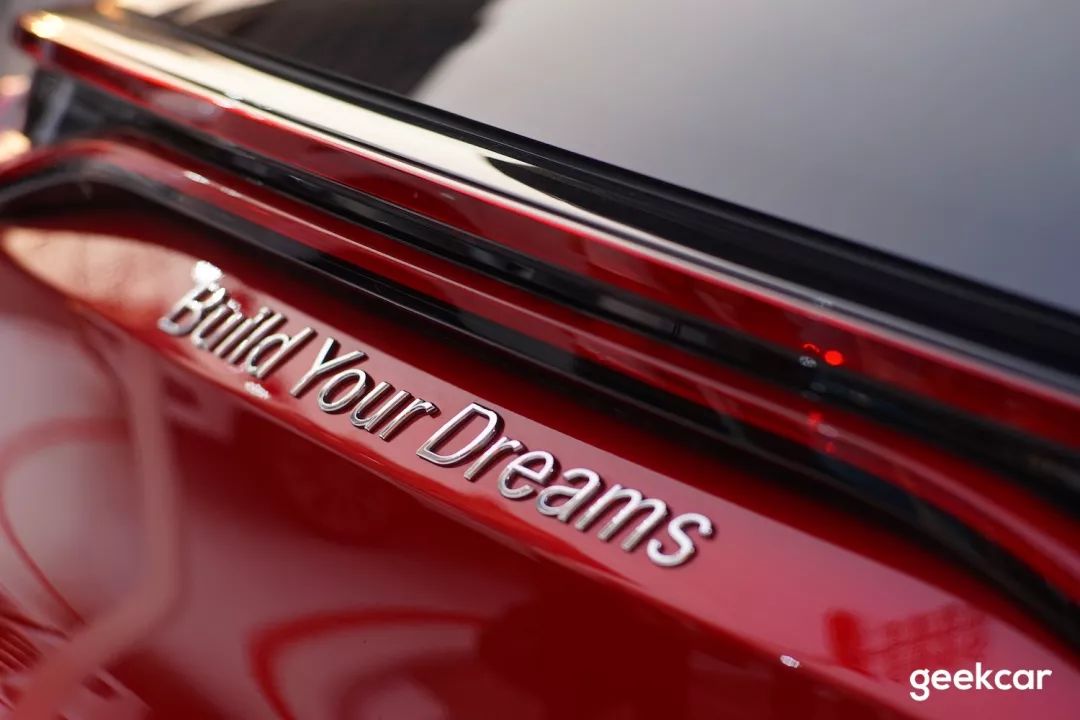
Is the acceleration still as fast?
Of course, yes. Do you still remember the BYD 542 strategy? The new generation Tang DM is still a result of this strategy. The acceleration time of the regular Tang DM is 4.5 seconds per 100km, 0.4 seconds faster than the previous generation. In addition, there is a high-performance version with a 100km acceleration time of 4.3 seconds, which is comparable to NIO ES8 in overall acceleration time.
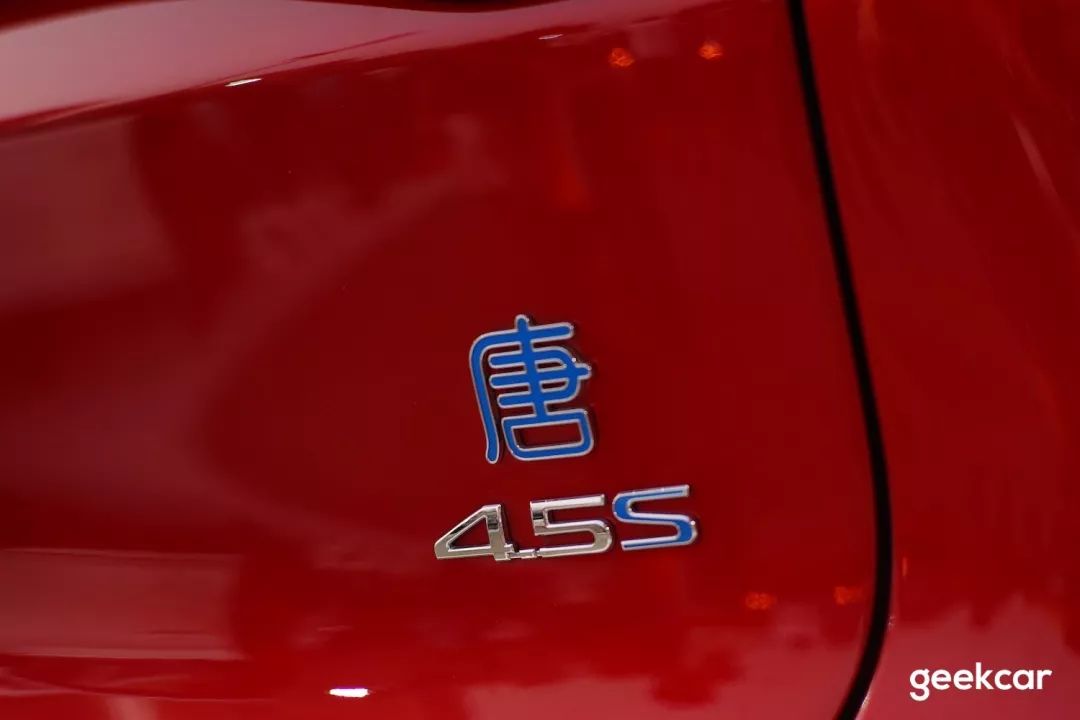
It should be noted that the highest performance can only be achieved when the car is fully charged.
The Tang DM with a 100km acceleration time of 4.3 seconds is priced at 329,900 yuan. Some of the “domineering elements” on the appearance of the new Tang are only standard on this model. For example, the 22-inch rims with branded tires and the Brembo brakes.
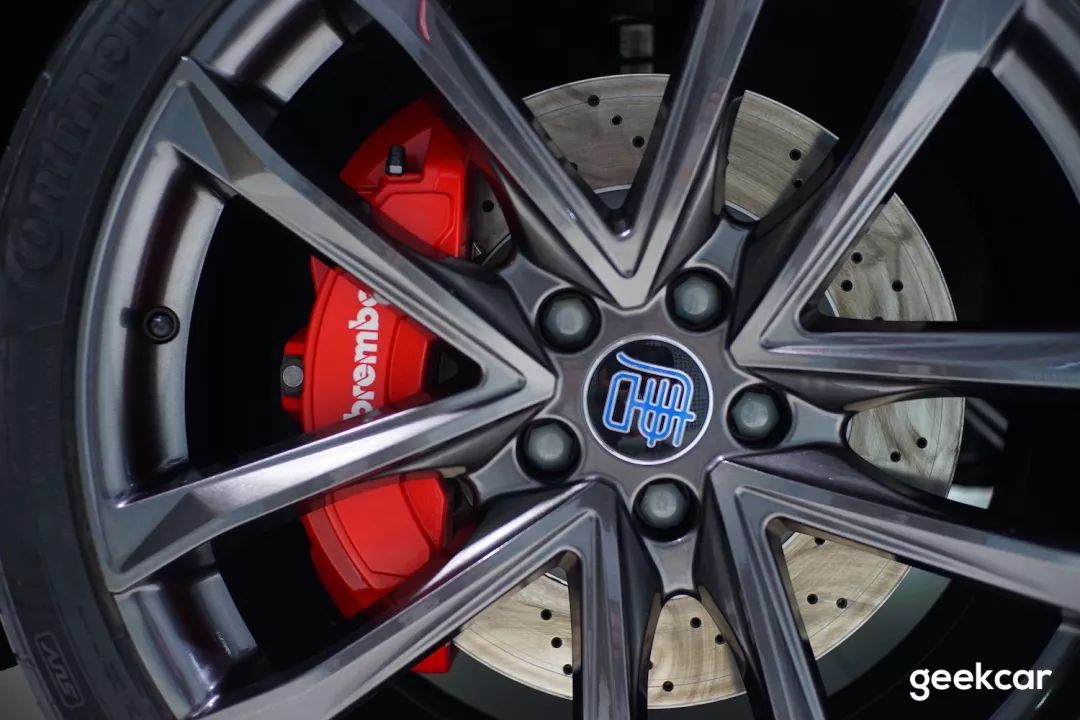
As for the fuel version of Tang, none of the entire series comes with 22-inch rims and Brembo brakes.
Has the overall driving experience improved?
The previous generation of Tang had fast acceleration, but the driving experience was not commensurate with its acceleration performance. The new generation of Tang theoretically has made significant improvements in this regard.
On the one hand, a brand new platform has been used, on the other hand, a high-strength body has been applied, and a lot of effort has been put into NVH.
Platform: Based on BYD’s BLP, a large-scale vehicle platform that can accommodate different vehicle body shapes with wheelbases from 2.7 to 3 meters. It can also adapt to different powertrain configurations, drive modes, steering systems, and wheel sizes. Of course, platformization has been what major domestic brands have been doing in recent years.
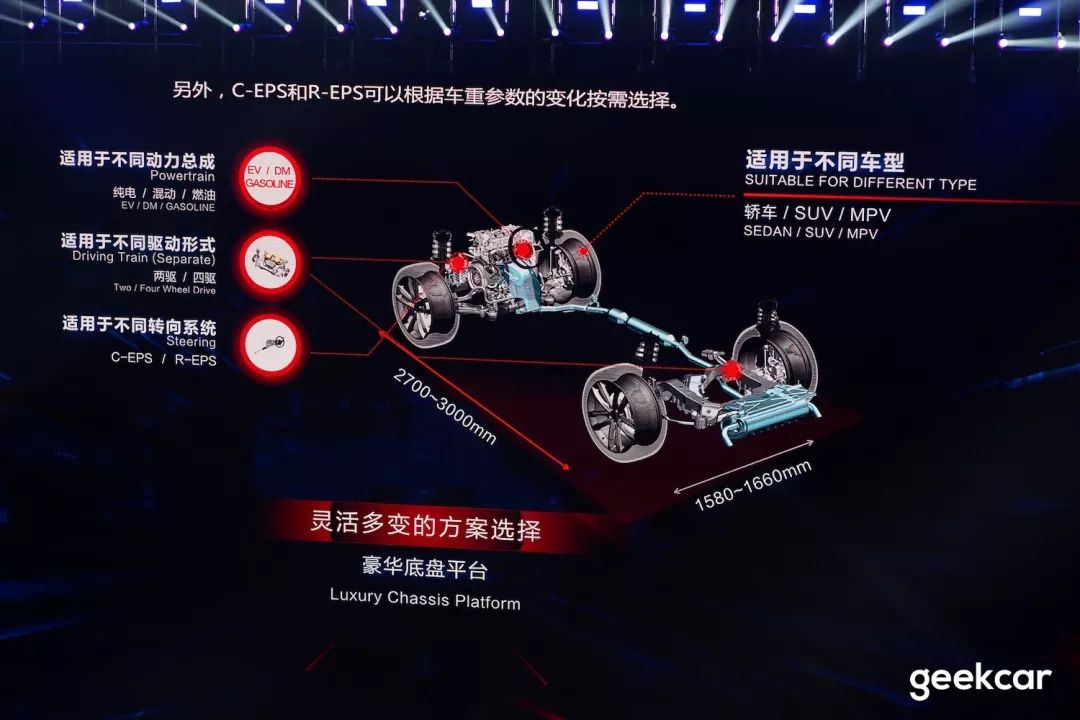
On the body level, although the wheelbase of this Tang is about 10cm longer than its previous generation, its unladen weight is 8.7kg lighter. Some parts of the unibody use aluminum alloy materials.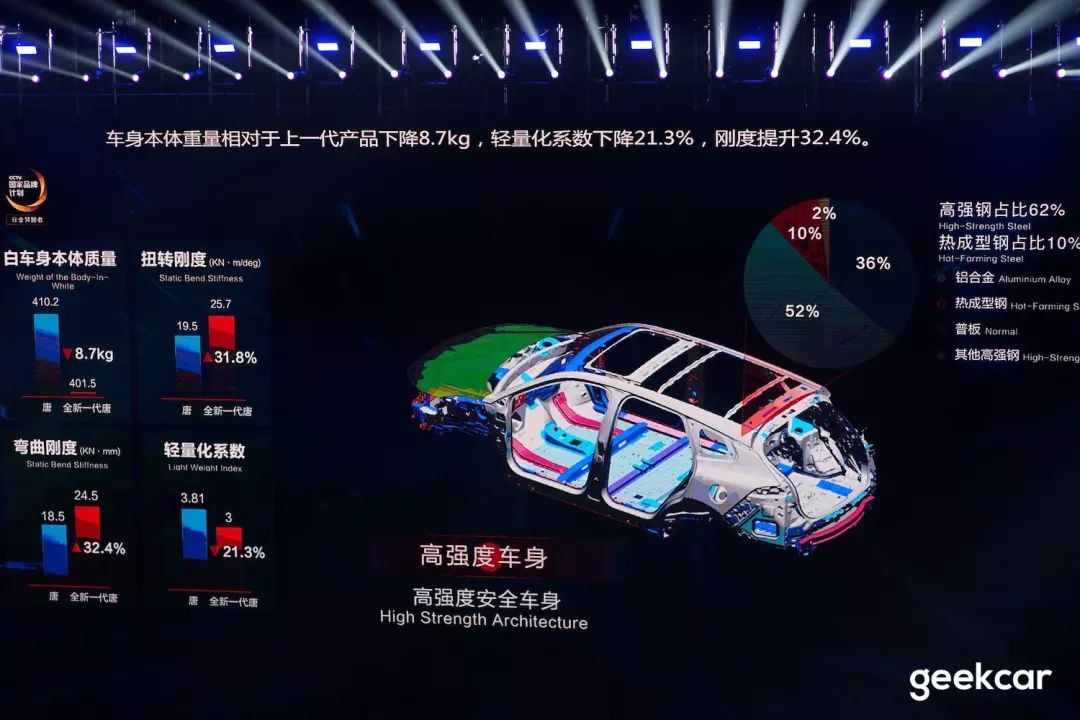
As for NHV, BYD’s name for it is “library-level quietness”, mainly achieved through engine noise control, chassis isolation, addition of soundproofing materials, and enhanced door seal. As for the actual sound insulation effect, it needs to be experienced personally.
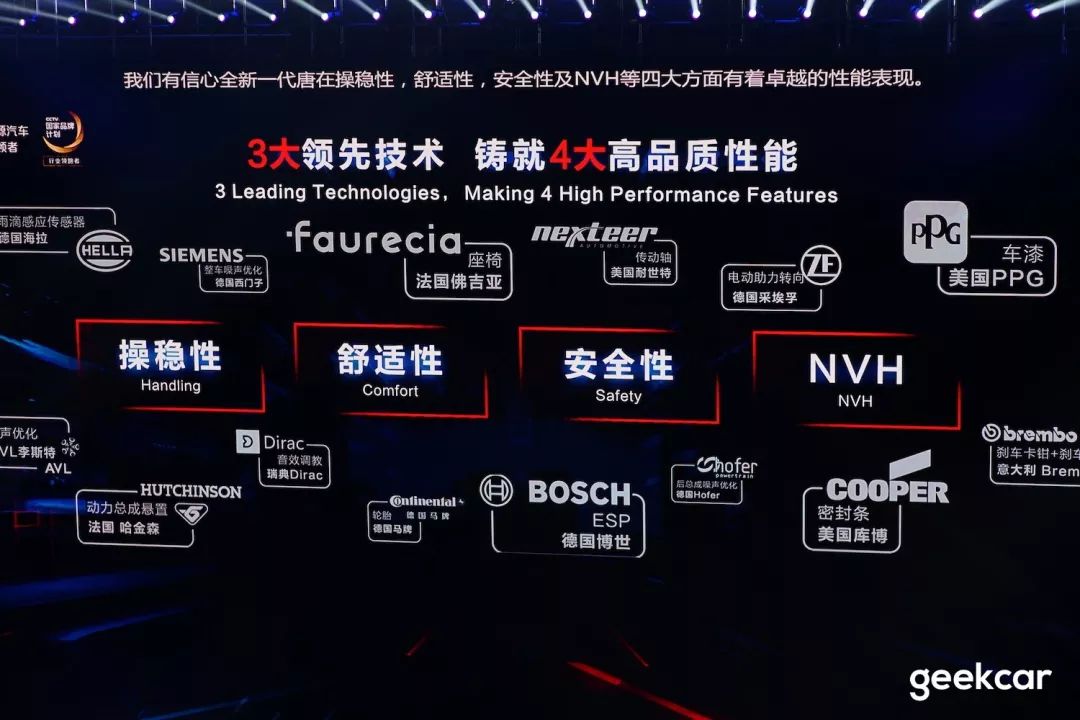
BSG Motor
The “DM” in Tang DM refers to BYD’s dual-mode electric drive technology, which has actually developed to the third generation. The Tang DM launched today is equipped with BYD’s third-generation DM technology.
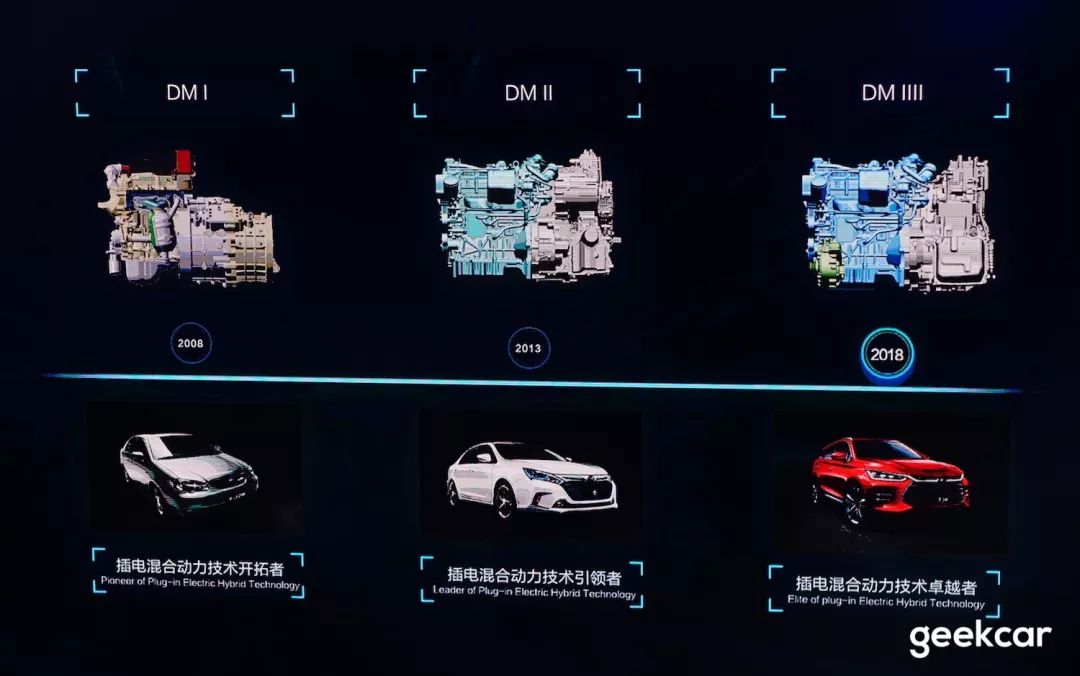
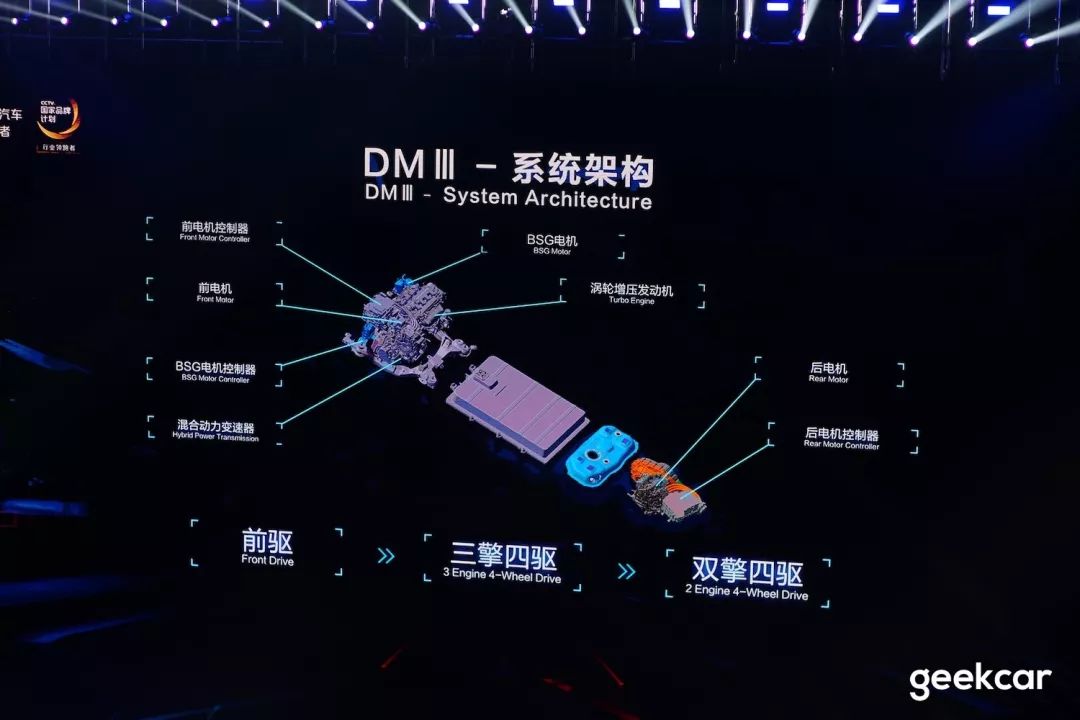
One of the criticized points of the previous generation Tang and Qin was the calibration of the hybrid system, such as poor NVH, significant engine vibration and noise, and poor power and fuel consumption in power shortage mode.
Therefore, in the third-generation DM technology, BYD has made many targeted designs on both hardware and software levels to address these issues.
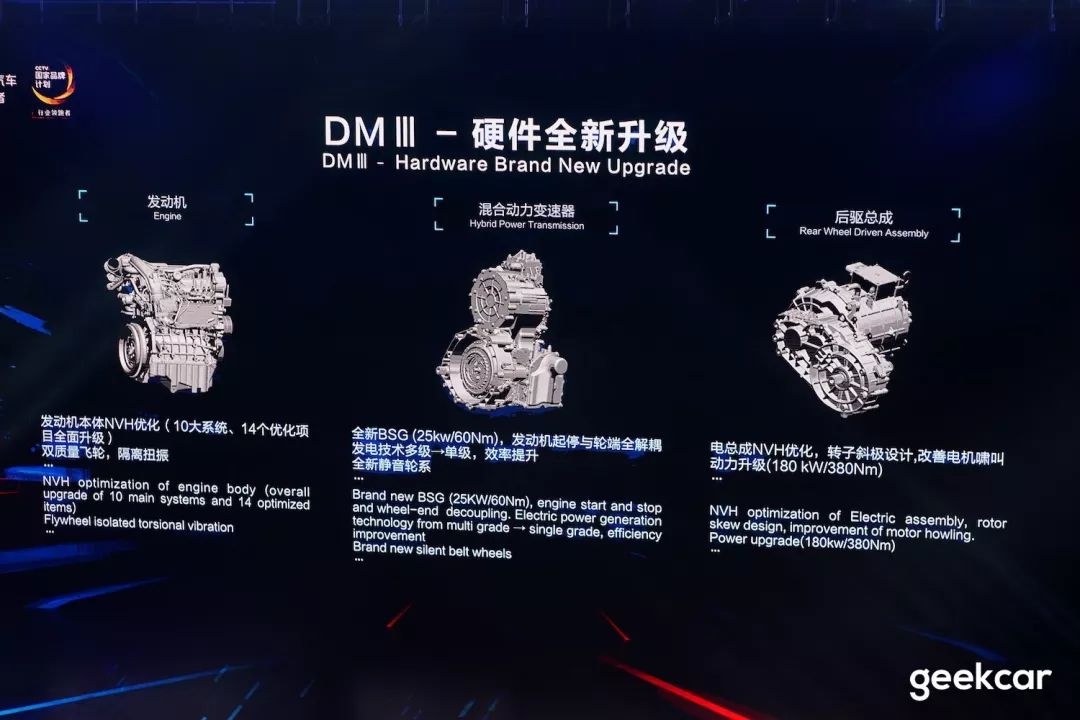
On the hardware side, the biggest change is the addition of a BSG motor, then optimization of the engine itself, and performance upgrading of the rear drive unit.
Correspondingly, 46 control strategies have been optimized and six control strategies have been added in software. In summary, according to BYD, third-generation DM technology has achieved comprehensive improvement in smoothness, economy, power and NVH.
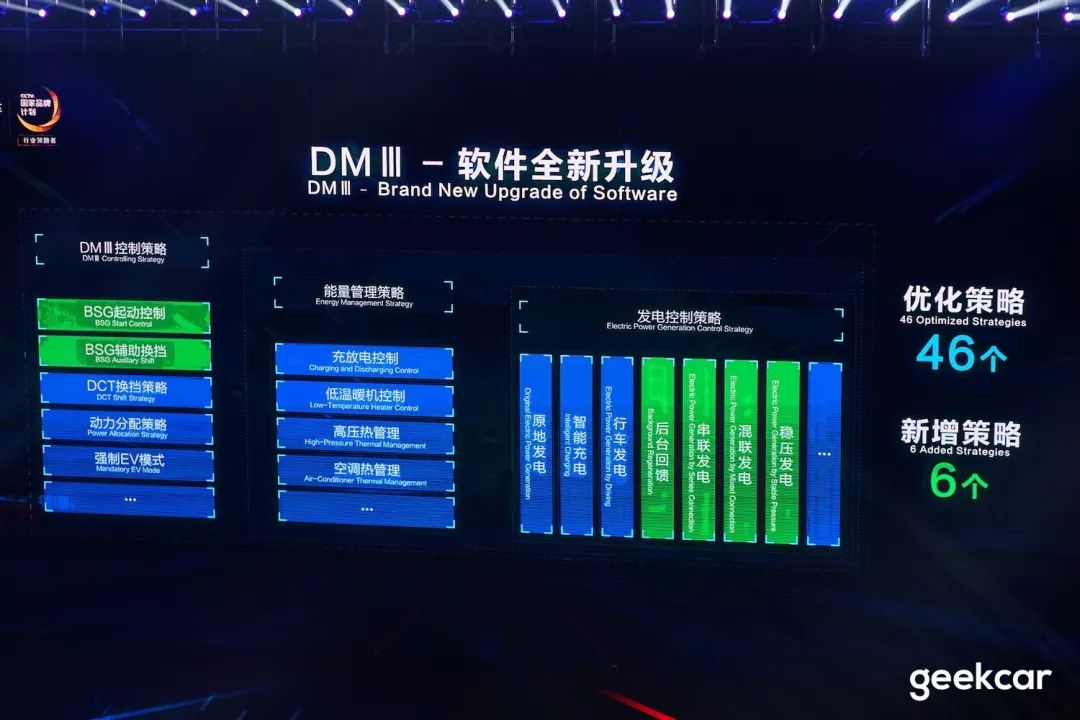
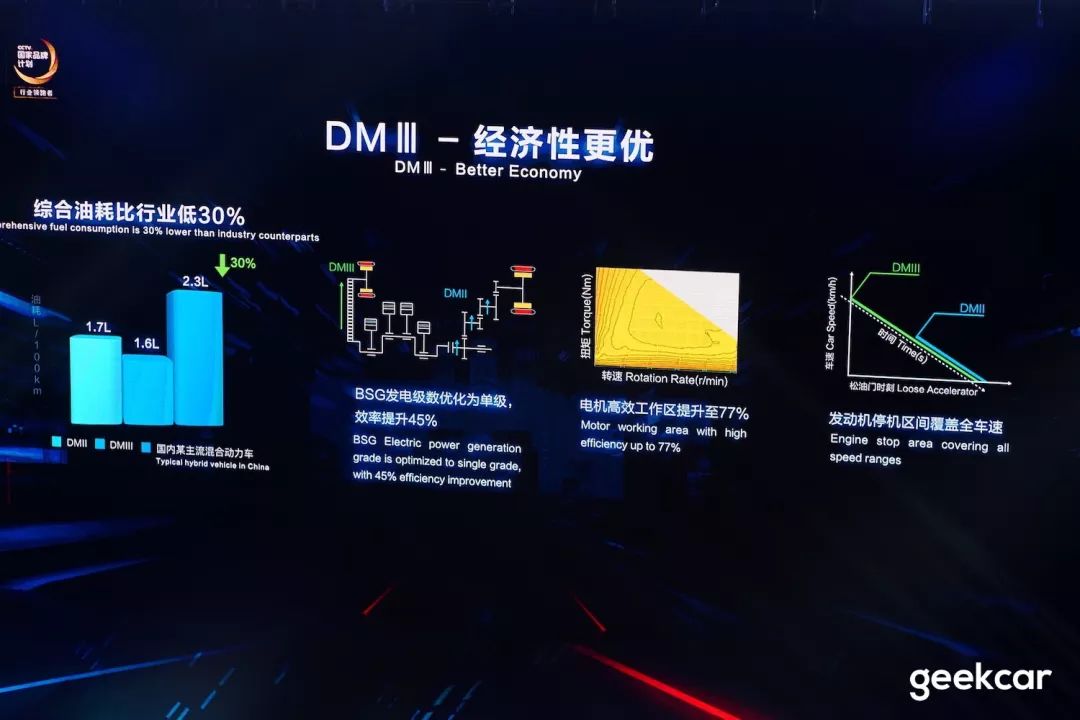
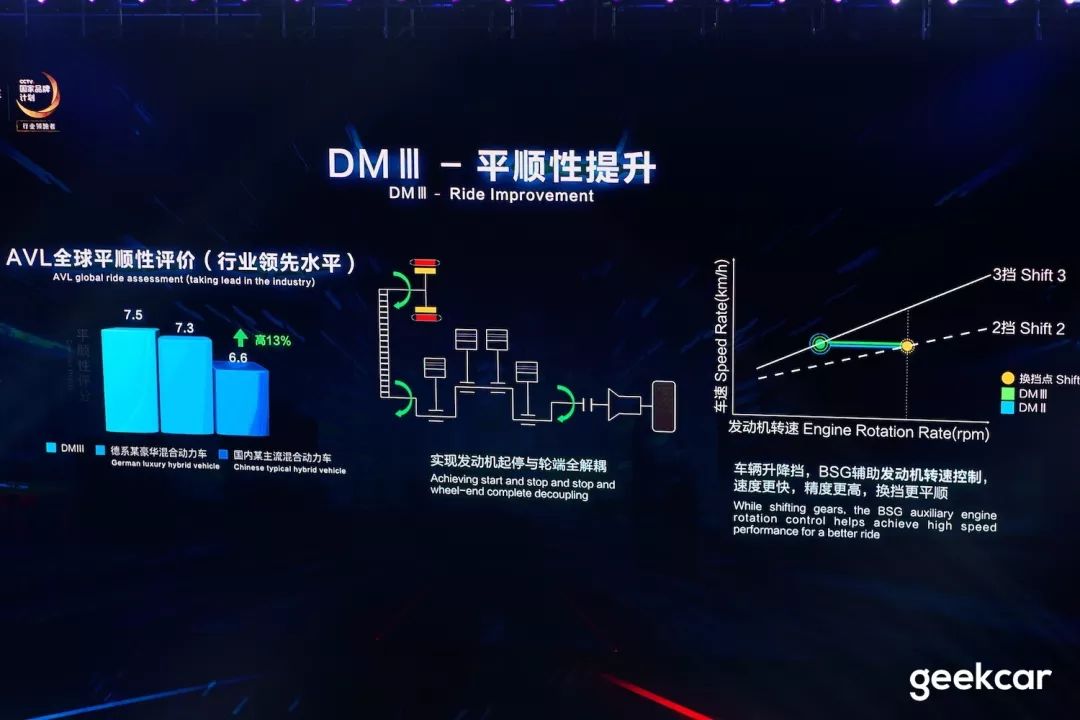
What changes are there in the powertrain system?
BSG is one thing, but we also need to talk about changes to the powertrain system. The Tang DM still has a 2.0T engine and dual motors.
The maximum power of the 2.0T engine is 151kW, and the maximum torque is 320Nm. The maximum power of the front motor is 110kW, and the maximum torque is 250Nm, which is the same as the old model. The maximum power of the rear motor has been increased to 180kW, and the maximum torque is 380Nm. Both the front and rear motors are permanent magnet synchronous motors.
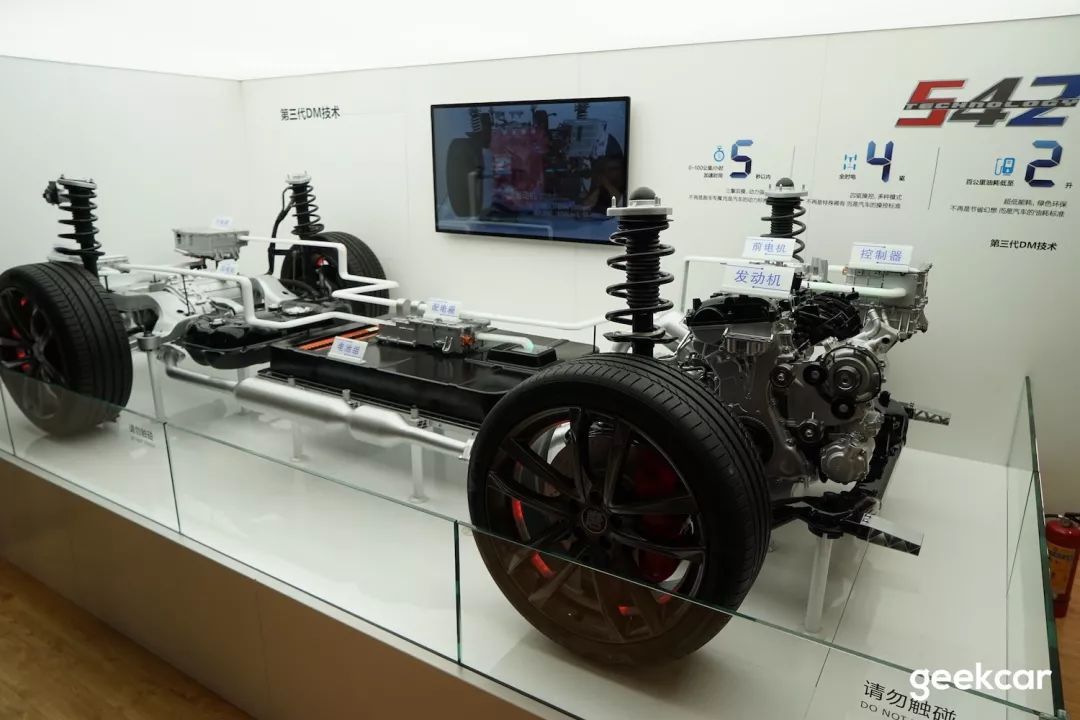
The entire system has a comprehensive output power of 441kW, and the maximum torque reaches an astonishing 950Nm.
In terms of pure electric cruising range, there are two versions: 80km and 100km, depending on the battery capacity. Among the five configurations of the Tang DM, the two high-end models are the 100km version. The battery capacity of the 80km version is 20kWh, and the 100km version is 24kWh.
The ternary lithium batteries of the Tang DM look like this:
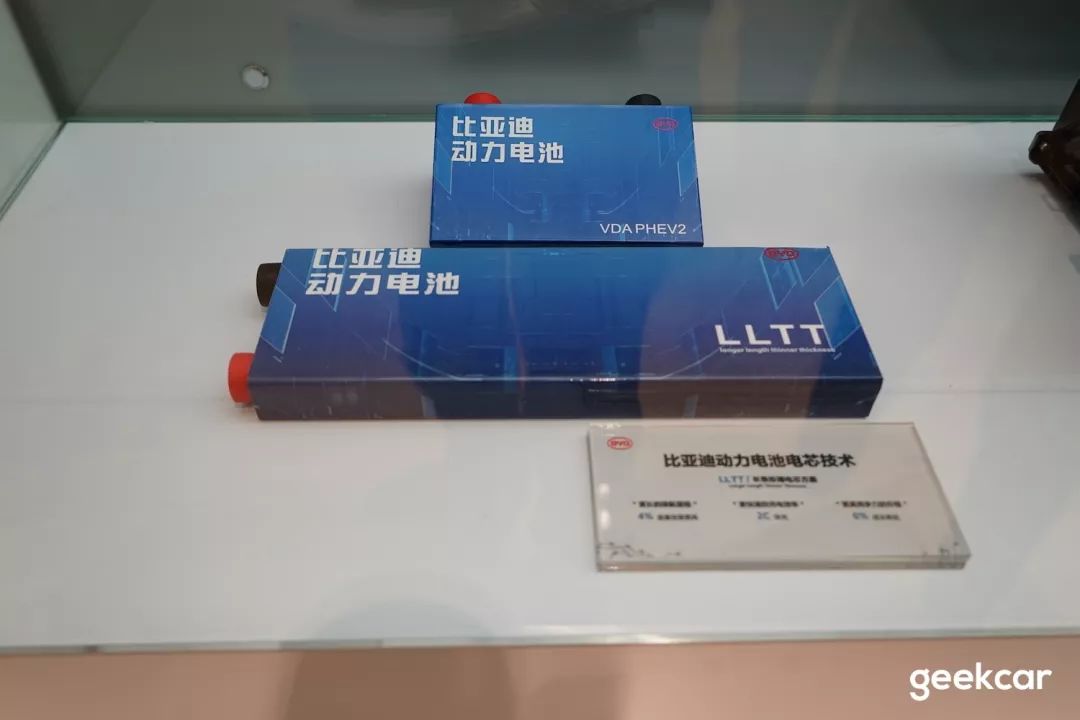
The module looks like this:
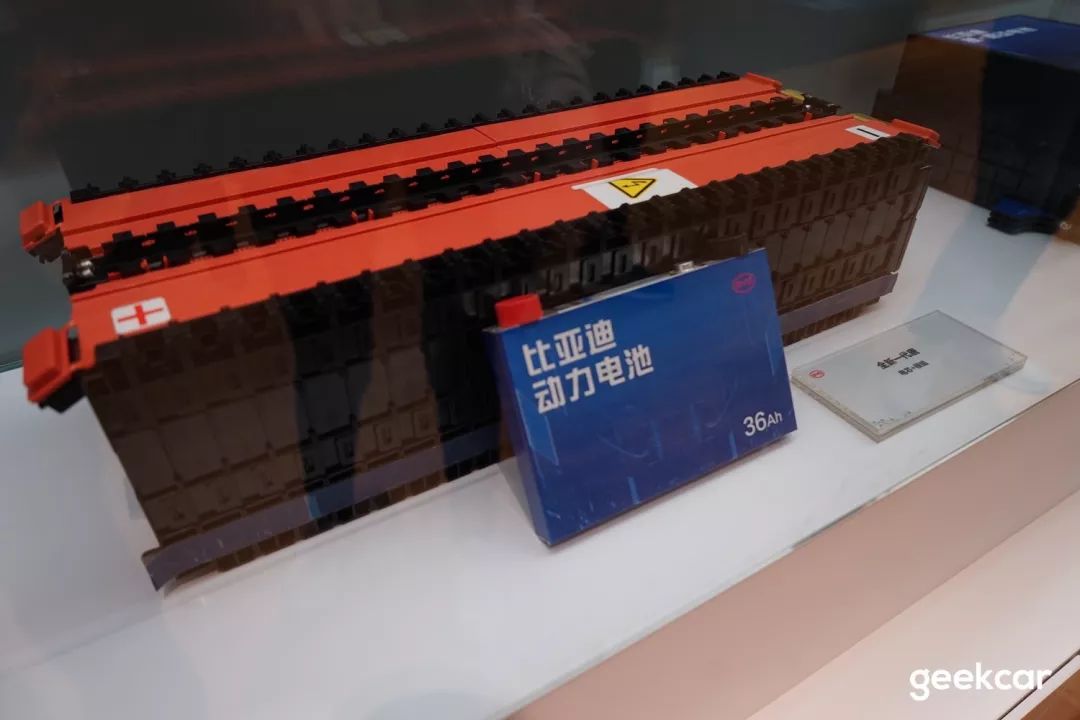
It is worth mentioning that from the exhibit of the Beijing Auto Show, the new Tang DM does not use the commonly seen lead-acid battery for the startup battery, but uses a lithium battery instead.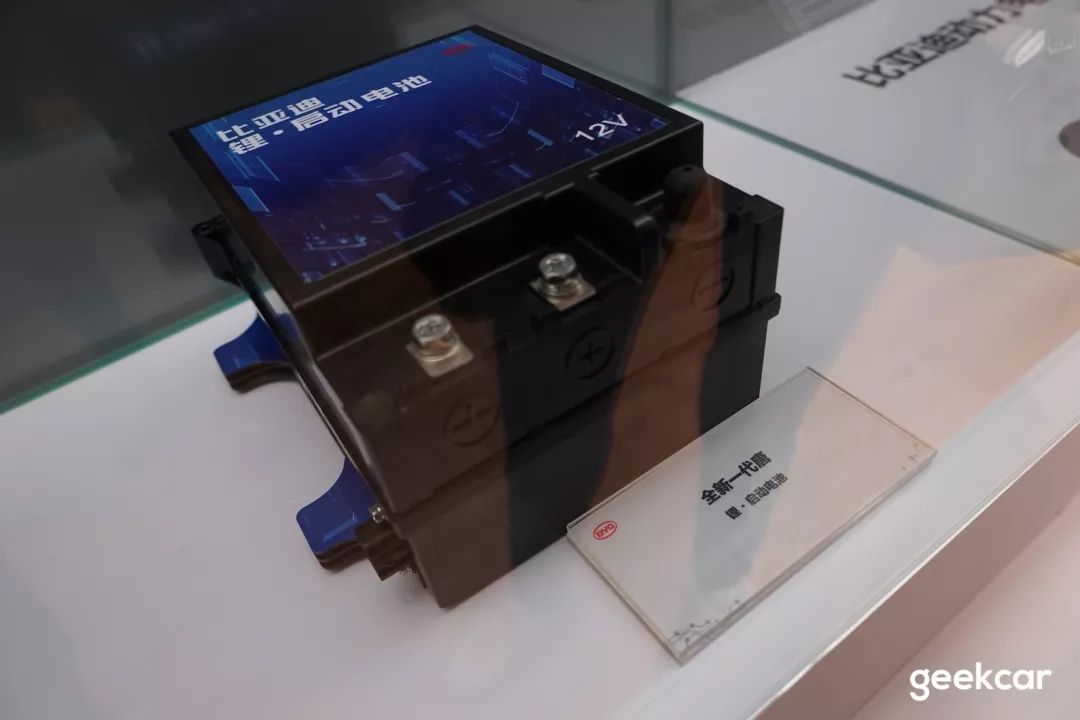
How about the ADAS function?
From the configuration table, it can be seen that the new generation of Tang, especially Tang DM, has a good performance in the deployment of ADAS safety configuration. Except for the lowest configuration, ADAS is standard on all models. The functions include ACC adaptive cruise control, AEB active braking, LDWS lane departure warning, far and near light intelligent switching, and traffic sign recognition.
Two points to note: 1. ACC adaptive cruise control has a take-over stop function, which means that even if the front car stops and starts again, the ACC system can still maintain the following distance; 2. The entire series only has lane departure warning and no active lane keeping. The lane departure warning system only has a reminder function and no correction function.
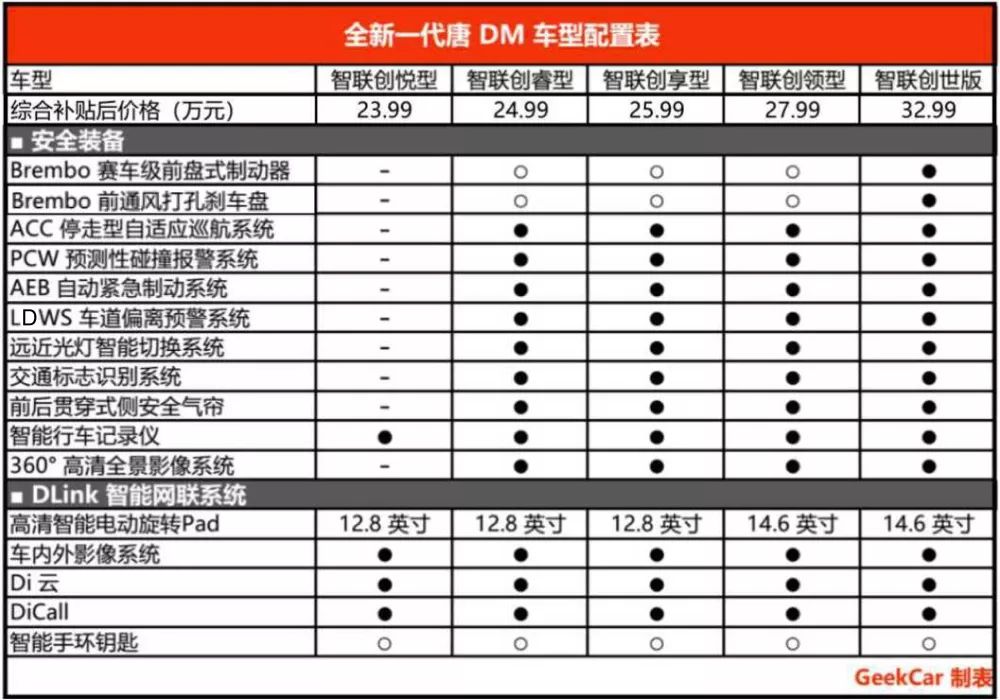
Rotatable large screen?
Yes, it is indeed a rotatable large screen. However, there are two sizes of screens depending on the configuration: 12.8 inches for low configuration and 14.6 inches for high configuration.
The entire series of Tang fuel version is equipped with a 12.8-inch screen, and the three configurations of Tang DM 80km version are equipped with a 12.8-inch screen, while the two car models of 100km version are equipped with a 14.6-inch screen.
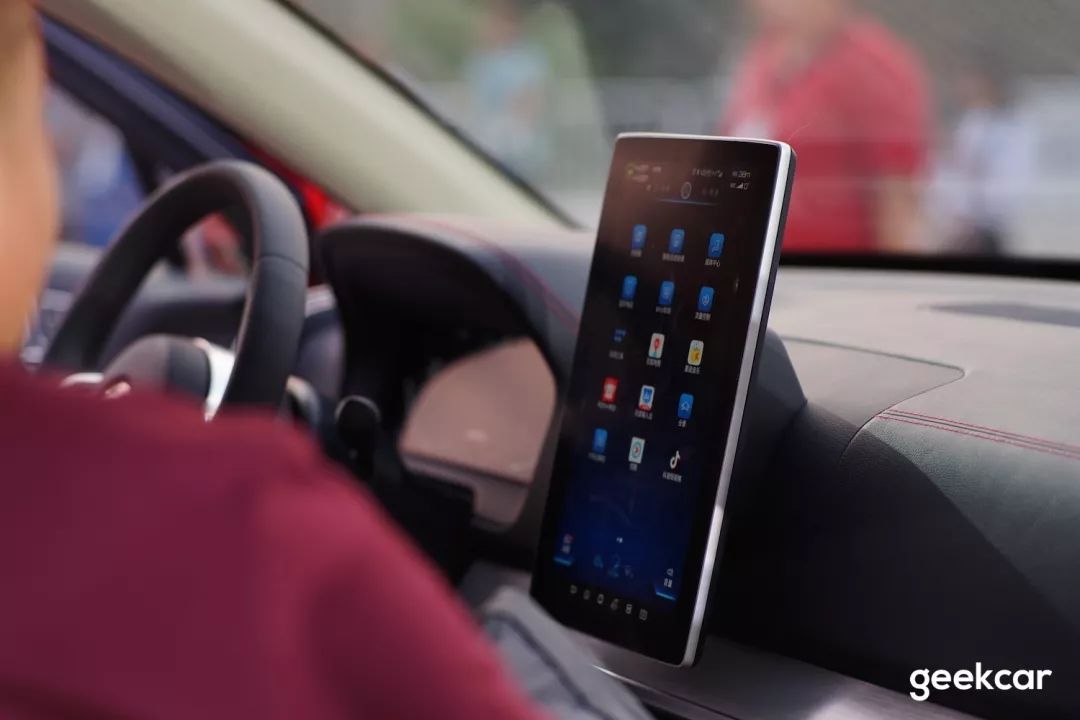
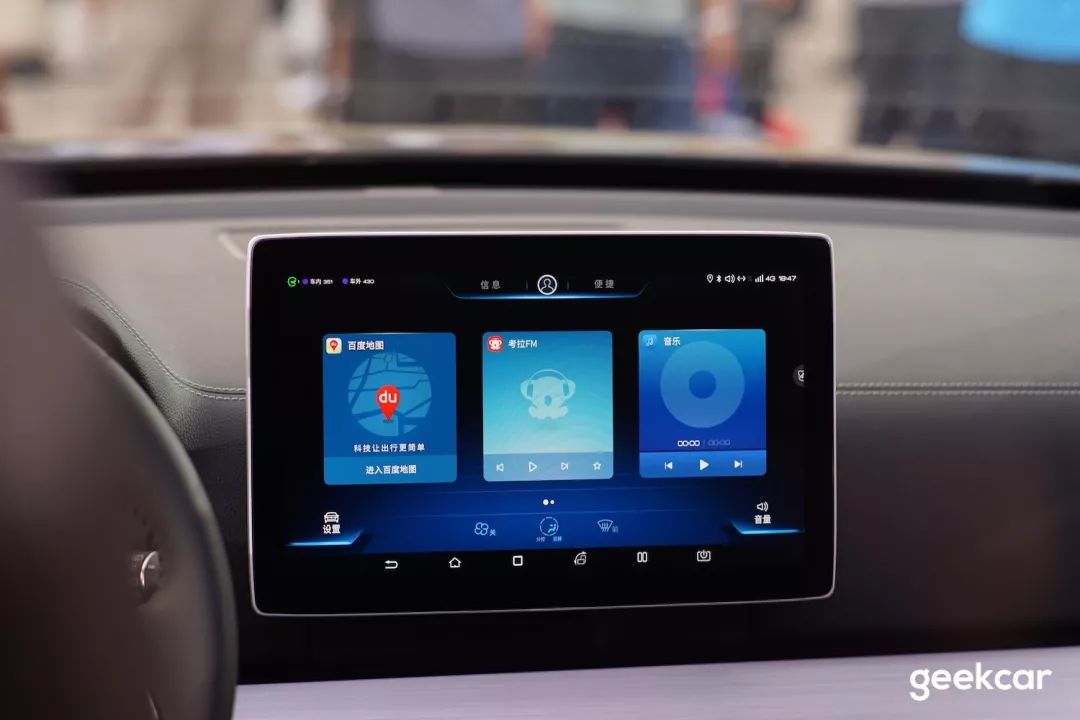
They are equipped with DiLink system. Yes, it has the same name as that Dlink router.
Car machine hardware configuration: CPU is 8-core 64-bit 2.0GHz frequency, model Qualcomm MSM8953, which is Snapdragon 625. GPU is 650MH, 3G memory, 32G storage space.
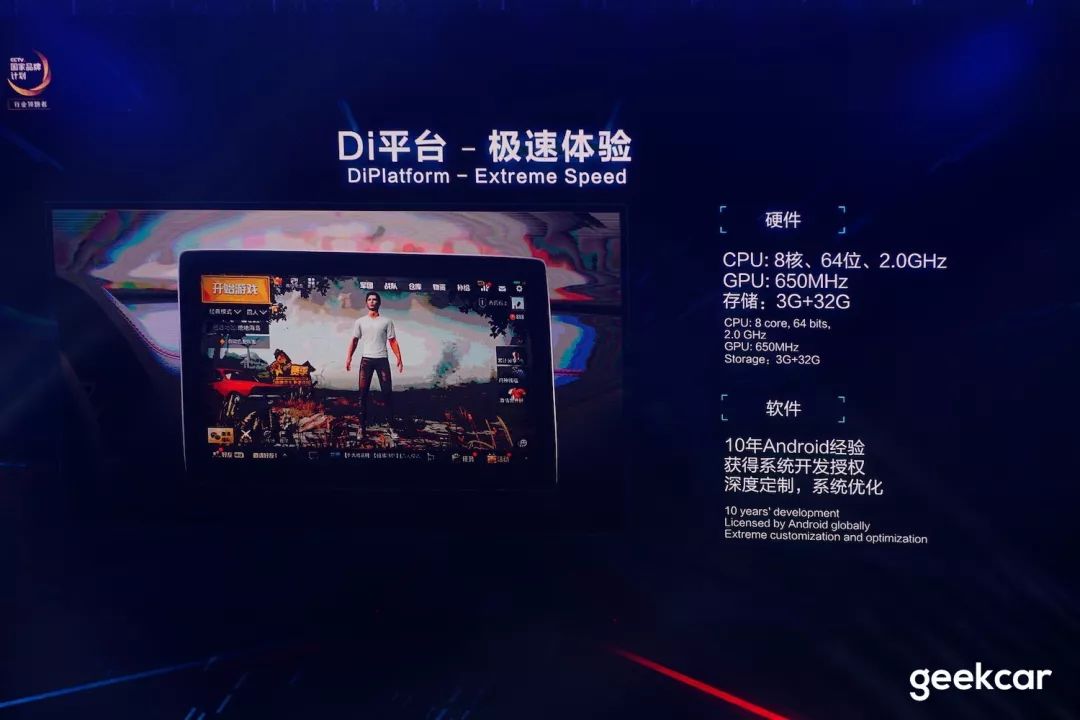
The next-generation DiLink system under development will use Qualcomm Snapdragon 820A CPU in hardware. Actually, we already introduced DiLink and the rotatable large screen in a previous article.
Your judgement is correct, this is indeed a big pad, and even BYD admits it. Moreover, it is based on Android, which means you can play games and watch Douyin videos on it.
However, for the car infotainment team at BYD, their job is more than just putting an Android pad into a car.
First of all, they need to define the scenarios for horizontal and vertical screens, and adapt the interface of the apps because most apps do not have a horizontal mode. In addition, this large screen also integrates with the functions of the whole vehicle, such as air conditioning and vehicle settings, which cannot be simply solved by buying an Android pad from Taobao and installing it in the car. In short, deep customization is required based on Android.
Actually, there is much more to say about BYD's in-car connectivity. We may introduce it in detail in a separate article, but we won't elaborate here.
## How big is the new generation Tang?
It seems that I suddenly forgot to mention its size... Compared to the previous generation, the new BYD Tang has obviously grown larger. The overall length has increased by 5.5 centimeters, and the wheelbase has increased by 10 centimeters. As a result, the new generation Tang is very close to the Toyota Highlander in terms of dimensions. That means you should have a general idea of its size. However, compared to the NIO ES8, the Tang is still one size smaller.
Of course, such a big car is 7-seater, but BYD also plans to launch a 5-seater model. Based on experience, the space of a 5-seater model will make people feel more comfortable, while the third-row seats of the 7-seater model are obviously not suitable for tall people.
## Pay Attention to the Sound System of the New BYD Tang
The reason why we single out the sound system is that it has some relationship with our company. In the official configuration list, there is an item called "Dirac Live Hi-Fi sound system". Dirac is not actually a speaker brand, but a company that does sound tuning for speakers.If you are familiar with the Volvo XC90, you'll know that their B&W sound system comes with three sound modes, including "Gothenburg Concert Hall," all of which are created by Dirac.
In 2016, BYD’s engineers approached me seeking for audio solutions. As I was on good terms with Dirac, I introduced them to each other, and unexpectedly, they managed to come to an agreement. Thus, Dirac’s first domestic project landed on the BYD Tang.
Overall, the new generation of Tang marks a new era for BYD. It is possible that from this car onwards, we will need to rebuild our understanding of the BYD brand.
BYD is trying to create a more “open” image by, for example, offering EV technology and the DiLink ecosystem to the public. The host asked Wang Chuanfu, “What do you think is the most crucial factor in being open?” Wang Chuanfu replied, “Firstly, you must be open-minded on a conceptual level.”
“Concept,” in fact, is a mysterious but ubiquitous thing, which guides a carmaker’s attitudes and methods in creating products and doing things. Have you seen the change in BYD’s concepts in the Tang?
Reference: Evergrande’s $2 Billion and Jia Yueting’s Dream* BYTON K-Byte Sedan Debut: As Expected, Euro-style and Radical (Chinese)
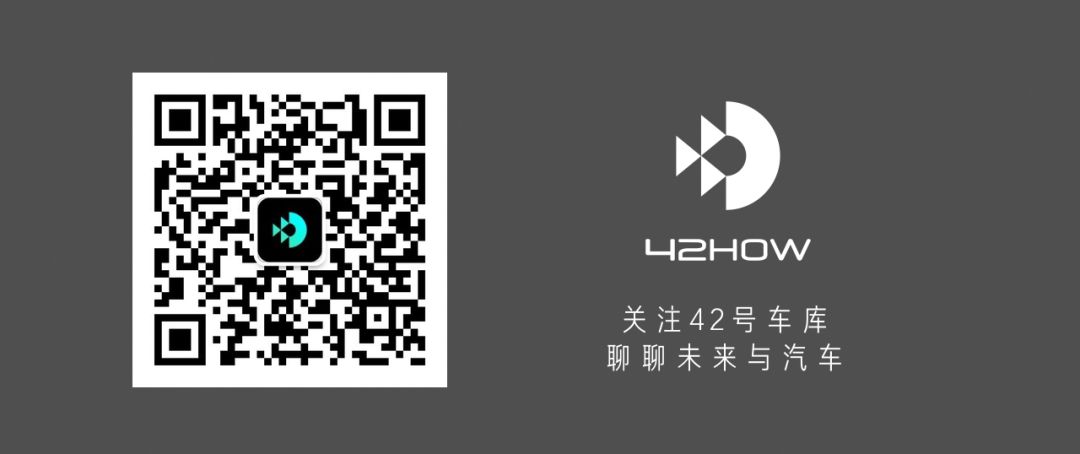
This article is a translation by ChatGPT of a Chinese report from 42HOW. If you have any questions about it, please email bd@42how.com.
